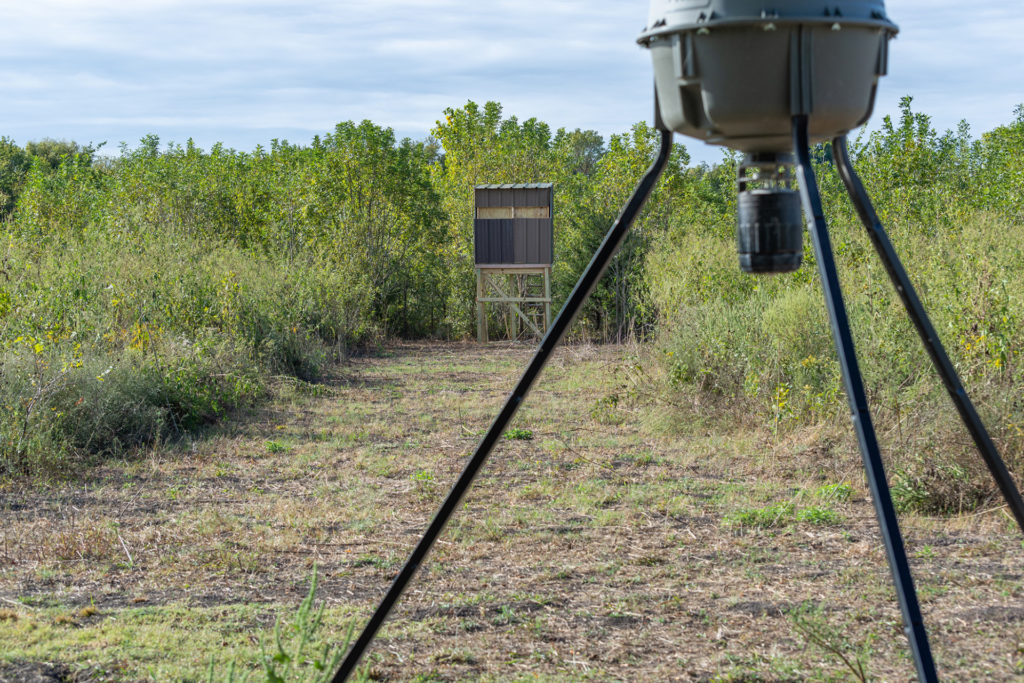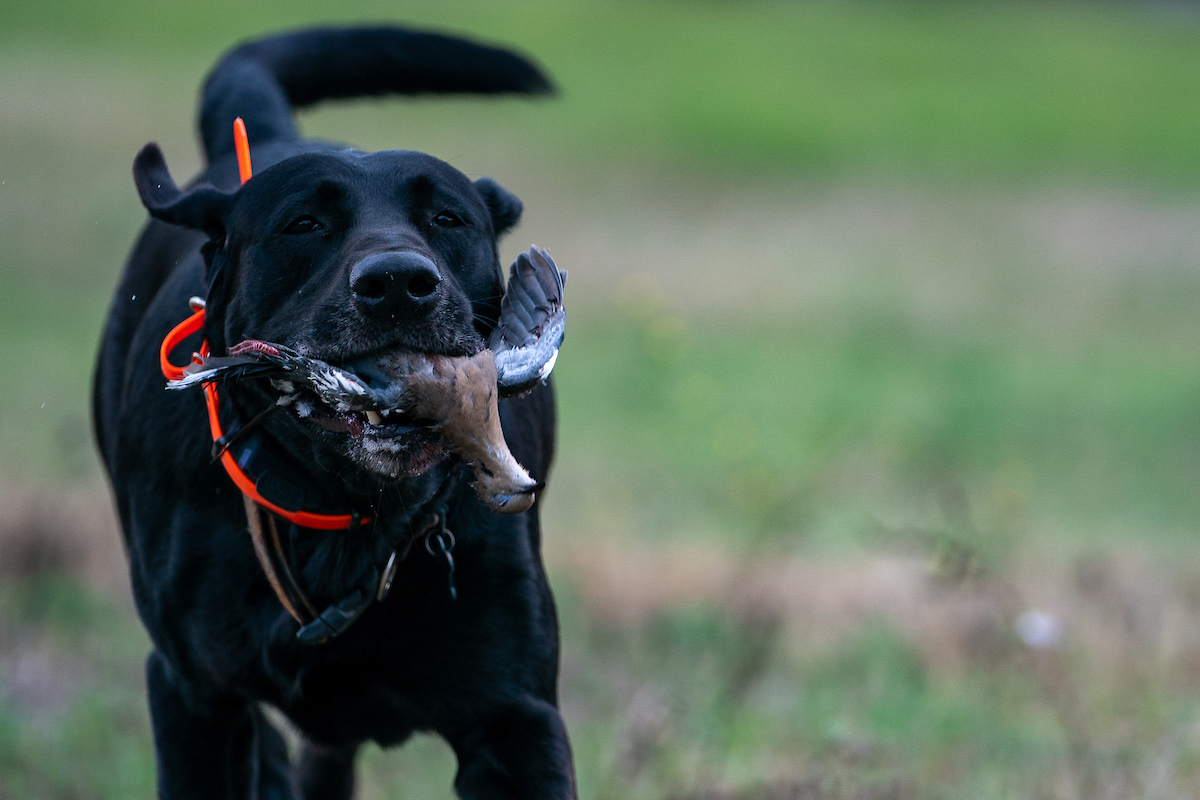Hunters prepare for opening day of deer season
AgriLife Extension wildlife specialist shares readiness tips
Every great hunter knows that success throughout the season is more likely when not left to luck alone. Making sure to develop a game plan early will pay off in the late-autumn rut.
Opening day for deer season kicks off for bow hunters in 252 Texas counties on Oct. 3 and runs through Nov. 6. Rifle season follows and spans from Nov. 7 through Jan. 3 in the North Zone and Jan. 17 in the South, with a special South Zone late season lasting through Jan. 31.
John Tomecek, Ph.D., is no stranger to this process. As a Texas A&M AgriLife Extension Service wildlife specialist and an avid hunter and gamesmen himself, Tomecek knows that when hunting, preparation is key.
Ensuring that preparations are complete and everything is ready to go is half the battle, and half the fun, for many hunters looking to head out on opening day.
“Good planning makes all the difference,” Tomecek said. “Planning should occur at the individual, party and property level. Individuals should know their goals and limitations and make a plan for achieving their goals during the season.”
Making a game plan
The best way to prepare is to scope out land and plots and talk with landowners to begin developing a plan. If they aren’t already, trail cameras should be set, and hunters should review footage—early and often—to pattern movement.
Hunters should also take time to head out to their trails to clear brush and any debris that might have built up to pave the way for a clean shot and ensure easy access in and out of land around their stand or blind. This also includes having the foresight to check blinds for any damage and survey for unwelcome critters like raccoons, mice, bird or insect nests. This helps take care of unwanted surprises and alleviates any burden or time constraints hunters might run into if they push it too close to opening day.
“Nothing dulls the excitement of opening day more than discovering unexpected guests—like yellow jackets or black widow spiders—and having to make a rapid, noisy exit from your blind,” Tomecek said.
While food plots should already be underway, making sure to monitor and maintain them through mowing, spraying, weeding and fertilization is a never-ending task. Hunters should also make sure to routinely visit their plots before opening day to check for any signs of deer.
All of this information will be helpful to hunters as they start to determine where to hunt and what times of day usually see high activity. While there is never any guarantee, keeping detailed notes about deer movement between now and opening day is a smart, easy way to increase the likelihood of a successful hunt.
Routine gear inspection
Strategizing is a good start, but at the end of the day it comes down to execution of that plan, which starts with making sure gear and equipment is ready to go.
When it comes to hunting, there is plenty of equipment involved. From blinds to clothing, harvesting tools and rifles or bows, each piece of gear plays an important role in hunting readiness.
“Many hunters pull their gear out of storage right before the season begins, but hunters ought to spend time all year maintaining their gear and practicing their marksmanship,” Tomecek said.
Smaller field-equipment preparations like checking batteries in flashlights and rangefinders are often overlooked steps, but ones that can have a big impact on ease of experience the first morning of your hunt.
While clothing may not initially register as equipment, for deer hunters ensuring that clothing is appropriate for weather and environmental hazards is a must. Folks should also take care to properly clean and treat clothing to eliminate odors. Deer have over 297 million olfactory receptors in their nose, making them incredibly sensitive to surrounding scents.
Ultimately, Tomecek said at a minimum, bows and rifles should be inspected for safety and accuracy. Taking the time to sight in bows and rifles gives hunters plenty of time to find the right setup and adjustments that work for them, to assist in a quick, clean shot.
Plus, it never hurts to get in a little extra target practice. Practice makes perfect, and hunting is definitely no exception.
Hunting is a sport of safety, and safety should go farther than responsible management of weaponry. For those in stands, returning home safely starts with double-checking access and safety equipment like ladders, climbing sticks, platforms, straps and harnesses for any rust, damage or breakage and replacing anything that raises concern.
A proper, legal harvest
A successful hunt is a safe and legal hunt. Before hitting the blinds on opening day, hunters should brush up on regulations enforced by Texas Parks and Wildlife Department, including those relating to licenses and permits, bag limits, tagging and chronic wasting disease.
These regulations are put in place to ensure the long-term management of white-tail deer populations in Texas, and it is critical that hunters are familiar with them.
“Always, check your Outdoor Annual for the areas in which you’re hunting. If you don’t carry the paper version, there’s a mobile application that works great, all available through Texas Parks and Wildlife,” Tomecek said. “Some general regulations apply everywhere. Check for special regulations in the county of harvest and be diligent at your recordkeeping.”
Valid hunting licenses are required of Texas residents to hunt on public or private lands and can be purchased online or through various local retailers, along with tags and other permits.
In the event of a successful harvest under a hunting license, one should be prepared to tag the animal and log the hunt, immediately. The tag from the hunter’s license must be filled out with information pertaining to the type of deer and date of kill prior to field dressing.
As long as evidence of tagging and proof of sex is ensured, deer can be transported.
As a preparation for by-the-book field dressing, hunters should ensure that equipment used for field dressing is in good shape and easily accessible prior to opening day, either in the field, back at base or at a hunter’s residence.
Knives and replacement blades should be sharpened and cleaned, and hunters should take time to pack disposable gloves.
When it comes to processing the meat, Tomecek said those looking to butcher their own game should do research ahead of time.
“Online resources make this far easier than it once was,” he said. “Otherwise, there are many quality professional game processors across the state.”
A final consideration for hunters in CWD Containment and Surveillance Zones is following protocol for reporting of Chronic Wasting Disease, a contagious, deadly disease in deer that causes a variety of somatic and neurological symptoms and poses a threat to conservation of deer in Texas.
Deer harvested in these localized zones, must be taken to check stations managed by Texas Parks and Wildlife Department within 48 hours.
A greater appreciation for nature and the food it gives
Hunting is as much a sport as it is a livelihood for individuals, families and local communities.
“For many, opening day is the return to familiar places, smells and sights,” Tomecek said.
“The air is electric with the promise and excitement of the coming weeks. It can be very busy in communities where hunting is a cornerstone of the local economy, as a kind of nature tourism.”
It’s this very draw to nature that sends thousands of residents and visitors to the field.
“Hunting is not all about harvesting an animal, it’s about interacting with the natural world around you in a very basic way—being a part of the ecosystem,” Tomecek explained.
He cited documented evidence, which promotes that time spent outdoors increases personal health and teaches hunters, young and old, a variety of critical skills.
It also puts food on the table for thousands of Texans each year, while helping manage the white-tailed deer population statewide.
“Careful management, according to science, has produced a situation where, in most areas, we have as many deer as the ecosystem can support,” Tomecek said. “Hunting provides us an opportunity to remove hungry mouths from the landscape to ensure that a smaller population of deer—what the landscape can naturally support—remain healthier, as does their habitat.”
So, harvesting of deer comes with great reward, but also great responsibility. Key to assuming this responsibility as a hunter is being informed and prepared prior to opening day.
For new hunters, this can be daunting, but Tomecek contends learning the trade is a beautiful thing and nothing novices should fear.
“Hunting is a tradition that requires a great deal of learning and time in the field,” Tomecek said. “I would suggest that folks seek out an experienced hunter as a mentor. There’s no shortage of folks glad to help a new hunter. These mentorships serve as a great reminder that even the best hunters didn’t become an expert overnight.”
Visit Texas Parks and Wildlife’s Outdoor Annual page for more information on hunting restrictions and regulations of white-tailed deer in Texas.







